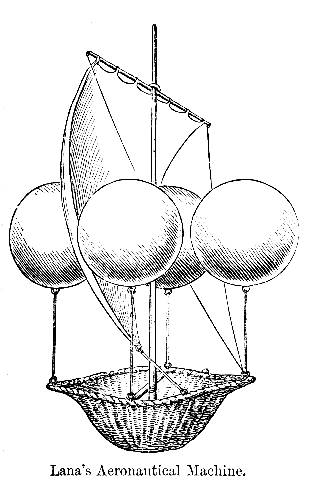
A balloon floats if its average density is less than that of the volume of air which it displaces. Typical balloons use hot air or a light gas such as helium to reduce their average density. Their upthrust is equal to the weight of the air their volume displaces, less the combined weight of the balloon skin plus the light gas they contain. Hot air balloons work because the density of hot air is less than that of surrounding unheated air. Balloons typically have flexible skins, although rigid skins are also possible.
If the gas within the skin was replaced by a vacuum, the upthrust would be at a maximum, but the skin would have to be rigid enough to withstand the pressure of the external air without collapsing. That is the basis of the Vacuum Balloon.
Surprisingly, this is not a new idea, but was the first workable suggestion for manned flight, made as long ago as 1670. This was not very long after the nature of a vacuum was first realized.
In 1670, a Jesuit Monk, Francis Lana, suggested an aircraft based on this principle in his book Prodromo dell'Arte Maestra, published in Brescia, Italy. This is pictured below.

Lana's design used four evacuated perfectly spherical copper globes each about 8 metres in diameter, with skins about one-tenth of a millimetre thick. While such structures would never withstand the pressure of the atmosphere under real conditions, and his design could never have been built, the hydrostatic calculations involved were valid.
This group of memons considers practical ways of building vacuum balloons using modern technology, and the uses to which they could be put. Their lifting powers could be very large -- one with a diameter equal to the length of the Graf Zeppelin, the largest dirigible yet built, would have a theoretical lift of around 80,000 tonnes.
INDICATIONS
Vacuum Balloon: Cropdusting: Detail [1444 - Y]